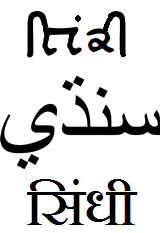Language/Sindhi/Grammar/Conditional-Mood
Hi Sindhi learners! 😊
In today's lesson, we will be discussing the conditional mood in Sindhi. The conditional mood is used to express a hypothetical situation or an event that may or may not happen in the future. It is also used to express wishes and desires.
Overview
The conditional mood in Sindhi is formed by adding the suffixes -ونھ or -ون to the verb stem. The suffix -ونھ is used for verbs ending in a consonant, while the suffix -ون is used for verbs ending in a vowel.
Formation
The conditional mood is formed by adding the suffixes -ونھ or -ون to the verb stem. For example, the verb stem of the verb 'to write' is 'لکھ'. To form the conditional mood, the suffix -ونھ is added to the verb stem, resulting in the word 'لکھونھ'.
Examples
Here are some examples of verbs in the conditional mood:
- لکھونھ (to write)
- سنونھ (to hear)
- جانونھ (to know)
- پکھونھ (to ask)
- چلونھ (to come)
Usage
The conditional mood is used to express a hypothetical situation or an event that may or may not happen in the future. It is also used to express wishes and desires.
For example, the sentence "If I had more time, I would learn Sindhi" can be translated into Sindhi as "اک ڪجھ کان وٺي، منهنجو سنڌي ۾ سڀ کان وٺون".
It can also be used to express a wish or desire. For example, the sentence "I wish I could speak Sindhi" can be translated into Sindhi as "منهنجو سنڌي ۾ بولي چاهيون ٿا".
If you have any questions, please ask them in the comments section below.
Feel free to edit this wiki page if you think it can be improved. 😎

